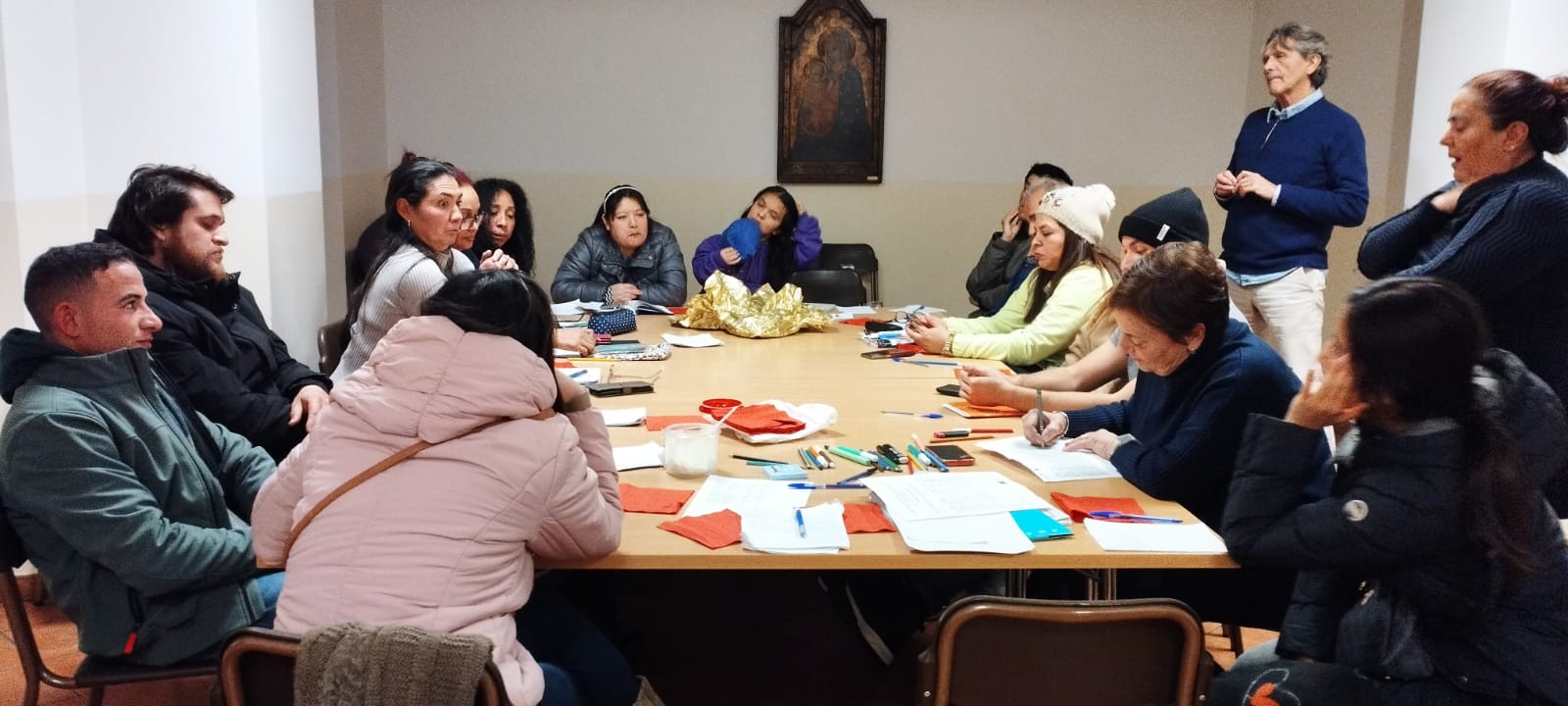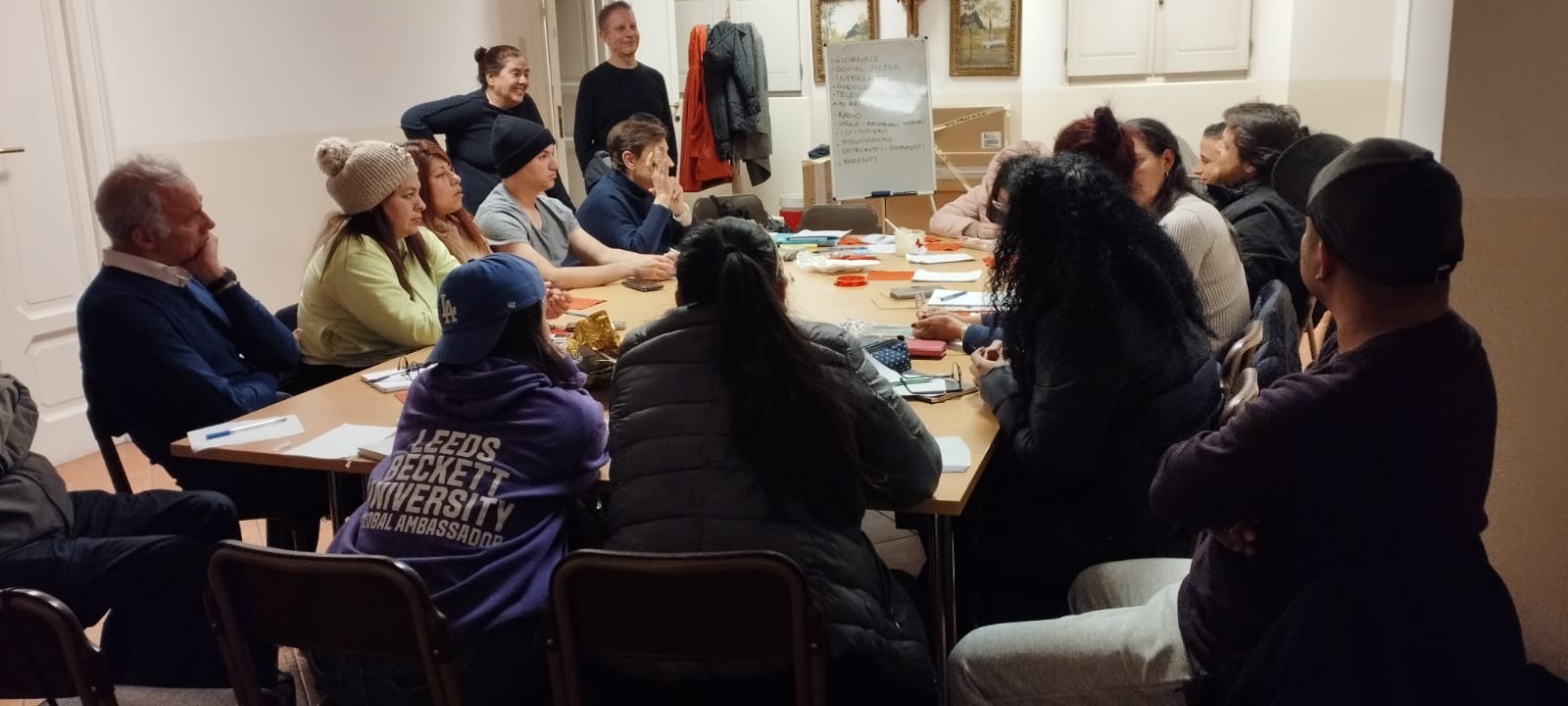The activities outlined in Work Package 9, “Increasing awareness and knowledge of local and vulnerable communities about disinformation campaigns, vectors, and actors at the national and European level,” consist of debates aimed at raising awareness and understanding of disinformation within these communities. In this context, a debate was held on November 20th in collaboration with a grassroots organization in Milan, the Associazione Volontari Francescani Milano, to discuss the topic of disinformation.
The meeting, organized by AMAPOLA at the headquarters of the Associazione Volontari Francescani Milano, involved 21 Italian participants of migrant origin who attend the association’s Italian language school to improve their language skills, as well as 3 volunteer teachers. The total attendance was therefore 24 people, including 17 women, 7 men, and 0 non-binary individuals.
The debate was structured in four phases:
- Thematic introduction and presentation of the project framework.
- Sharing personal experiences.
- Group work in three subgroups, with two representatives per subgroup reporting to the audience.
- Conclusions, summarizing shared insights and future commitments.
The discussion began with an introduction to the topics of information and misinformation, facilitated by AMAPOLA: What is information, and what is misinformation (false or misleading information deliberately spread)? Using examples, it was shared with the participants how misinformation not only creates confusion but can also negatively influence life, public perception, policymaking, and geopolitical consequences.
The main communication channels, both institutional and informal, were listed, followed by tips on how to recognize misinformation. Identifying misinformation is crucial to avoid manipulation and form opinions based on factual information.
Key factors to help identify fake news were presented:
- Emotionally charged language: Misinformation often uses overly dramatic or sensational phrases to provoke fear, anger, or outrage.
- Lack of clear evidence: Unreliable claims are often vague and unsupported by data. Trustworthy arguments should reference studies, scientific research, statistics, or official documents. The absence of such sources or falsified citations is a red flag.
- Confirmation bias: Misinformation often aligns with pre-existing beliefs to reinforce them. Awareness of personal biases and the effort to verify information—even when it confirms one’s views—is essential.
- Manipulated visuals: Modern technologies allow for easy alteration of images and videos, often used to deceive.
Participants were reminded that verifying news before sharing it is fundamental to avoid contributing to the chain of misinformation.
The debate continued, exploring participants’ personal experiences and connecting information and misinformation to their lived realities. They reconstructed and shared instances of receiving good, false, or distorted information and how such information impacted their daily lives.
To understand the information process, participants individually reflected on how they stay informed about life in Italy and their countries of origin, as well as their perceptions of the reliability of media and sources.

Key points raised during individual and group discussions
1 – Information channels in Italy and in the countries of origin
In Italy: Frequently mentioned channels were radio, social media, the internet, and TV. However, many participants reported limited engagement with Italian news, citing a perception of constant negativity (“bad news”) or unreliable reporting by political figures.
In the countries of origin: Participants mainly used radio and social media, but the primary source of updates remained direct communication with family members back home.
2 – The impact of misinformation on perceptions of reality
A sense of disillusionment with Italian politics and media emerged, with a preference for entertainment content such as music or sports.
Awareness of the risks of misinformation was high, especially regarding social media, with requests for tools to identify credible sources.
3 – Media narratives about migrants in Italy
Participants noted a predominantly negative portrayal of migrants in the media, especially in crime reports. However, they expressed limited awareness of how social media and general media narratives depict them.
4 – Information prior to arriving in Italy
Pre-migration information was sometimes incomplete or did not match the lived reality. For example, participants initially perceived Italy as a strongly practicing Catholic country. Most gathered general information from TV, films, and the web, and specific details from relatives or acquaintances already in Italy.
The session included an analysis of Italian newspapers and leading media outlets, comparing how the same story was reported by different sources. This exercise encouraged participants to always critically evaluate what they read or hear.
In conclusion, the meeting highlighted the importance of the topic for fostering conscious inclusion. Participants acknowledged the value of verifying sources and adopting a critical approach to information, especially in light of their future ability to vote. A significant proposal that emerged was to use the Italian school as a regular forum for discussing news through practical exercises such as comparing sources and media outlets.
The event reinforced the need to work on media literacy as a tool for empowering new European citizens of migrant origin. Participants were encouraged never to abandon the pursuit of information, despite the anxiety that news can sometimes cause.
The debate ended on a positive note, emphasizing that through knowledge and the sharing of real experiences, it is possible to counter misinformation and build a more inclusive and aware society. The collaboration with the Volontari Francescani and the Italian school in Milan stands out as an effective example of synergy between local networks and European initiatives.
Cofinanziato dall’Unione europea. I punti di vista e le opinioni espresse sono tuttavia esclusivamente quelli degli autori e non riflettono necessariamente quelli dell’Unione europea o dell’Agenzia esecutiva europea per l’istruzione e la cultura (EACEA). Né l’Unione Europea né l’autorità che concede il finanziamento possono essere ritenute responsabili.



